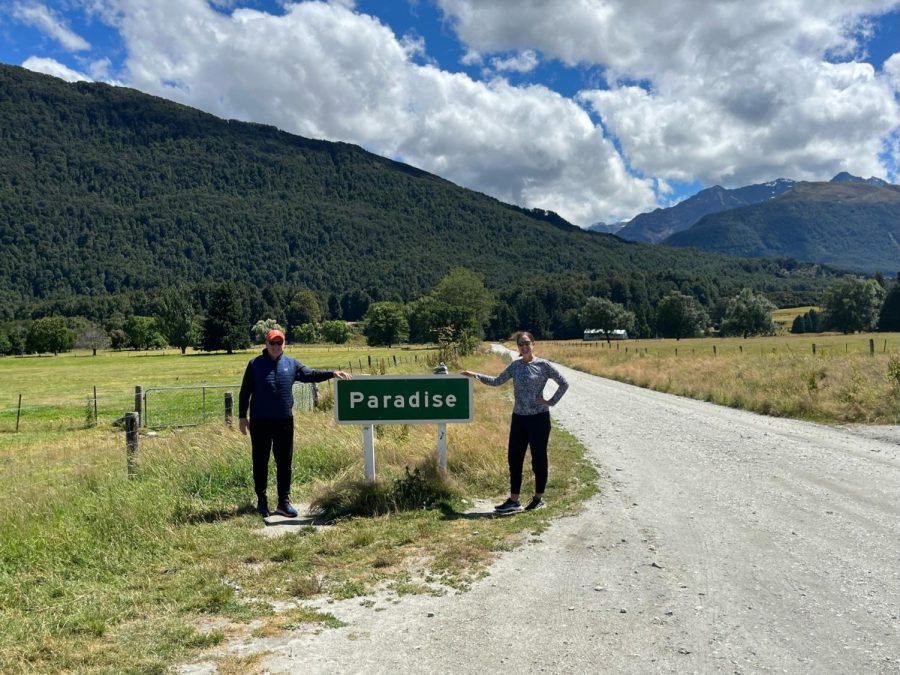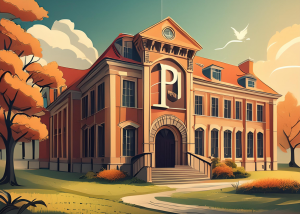Head of School Mr. John Kowalik Reflects on His Sabbatical
In an extended interview with The Current, Mr. Kowalik describes exploring our “big beautiful” world
June 3, 2023
In late November, Mr. John Kowalik, Potomac’s Head of School, embarked on a five-month-long sabbatical with the goal of traveling the world, spending time with family, and reflecting on life.
A few weeks after his return to work, The Current sat down with Mr. Kowalik to find out what he saw and learned while he was away.
Editor’s Note: The following interview has been lightly edited for clarity and length.
What motivated you to take a sabbatical, and how did you spend your time during it?
More than four years ago, I was offered the opportunity for a sabbatical by our Board of Trustees. It was in conjunction with a longer-term contract for me to stay at Potomac a little bit longer as Head of School, which I’m honored to do.
I had some thoughts initially about what I would do, and because of COVID [when Mr. Kowalik had first planned to take his sabbatical], it changed. The time away became about spending time with my family and traveling. My wife and I wanted to use this time to see the world and places we’d never seen before. We also wanted time to do some reading, writing, and reflection. And it was also a chance to reflect on my life and my work and its meaning.
What places did you visit on your sabbatical?
In early January, my wife and I left from Dulles Airport, and 18 hours and two days later, we landed in Auckland, New Zealand. We spent quite a bit of time in New Zealand and in Australia. We had never seen these countries but we were always very curious about them. One benefit of going during our winter is that it was summer in New Zealand. And the day we arrived in Auckland, New Zealand, the sun was out until 9:30 that night. We spent nearly two and a half weeks exploring the two islands in New Zealand. The North Island, and the South Island. They were both stunningly beautiful.
Every place we went, we kept trying to find another word for beautiful and gorgeous. The North Island is a volcanic island. The South Island is tectonic, formed by shifting plates. I found that difference to be very interesting. Both islands have a natural beauty that I have not seen elsewhere. The people are very friendly. I also took my first-ever helicopter ride. For someone who has a fear of edges and high heights, that was a big moment for me.
When we left New Zealand, we flew to Melbourne, Australia, where we had an opportunity to see the Australian Open. I love tennis, and we went to see several of the matches. After our nice visit to Melbourne, we went up to the Great Barrier Reef which is, again, gorgeous. The reef is just part of the natural ecosystem there. We finished our trip in Sydney, Australia. Sydney is a very cosmopolitan city. They have the largest natural harbor in the world, and a lot of what they do is by ferry.
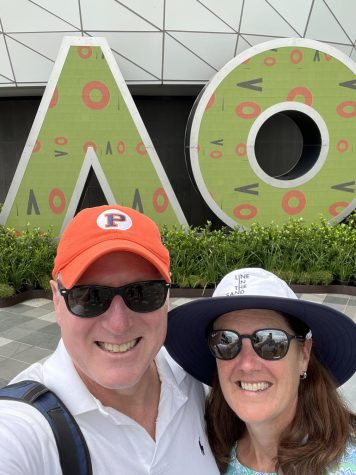
The second big trip was to Italy. This was particularly special for me because I used to teach AP European History years ago, and I always had an interest in the unification of Italy. Being there provided real understanding of how some of the challenges they had to overcome in history still exist today. Many of us know about the beauty of the land, and the culture, but there is also a rich history. We had the opportunity to visit Rome, Florence, and Milan– the food was wonderful and the people were fantastic.
Did you have any particular goals for your sabbatical?
It was important for me to spend time with family and friends and have opportunities for quiet reflection. I also wanted to see the world and to go places that we have always wanted to visit. I think that overall, the gift of time that was afforded by the sabbatical offered us the opportunity to get out of our normal routine and experience the world in new and different ways.
Did you learn anything during your time away, and how do you envision applying these insights to Potomac?
The world is a big, beautiful place. There’s so much wonder and such diversity. And our world is also troubled. There are issues in every country and some of the issues that we are experiencing in the United States are being felt across the world, whether there’s political polarization, or reconciling with the historical treatment of indigenous people, and challenges in education. While Potomac is a wonderful private school, the world relies on a good public school system. What we see in the United States is true in other countries—There are wonderful schools and there are also schools that are under-resourced that need to be improved. There is also pressure on teachers across the world with many countries being affected by teacher shortages. There was an interesting example in Australia where in the northern territories they did not have enough teachers and they worked to recruit teachers from other parts of the country and incentivize them to move.
As time goes on, we enjoy the highest standard of living that humanity’s ever had. Yet, we also have people who struggle and we need to remember those folks. The United States is not unique. We often tend to think that we’re the only country that’s experiencing something, and that’s simply not true.
I reflect on my experiences and how educational the trip was for me, and what we might be able to learn from and apply to our school and our students. For example, we went to Lady Elliot Island and the Great Barrier Reef. Here there were a lot of students studying marine biology, and you could see how [experiential learning] deepened their understanding of marine biology and the Great Barrier Reef itself. I think about our SERC program, our VPAC program, our GPAC program, and now our EFEB program, and how we can have more experiential experiences for students. I do believe that can be a very important part of a student’s education.
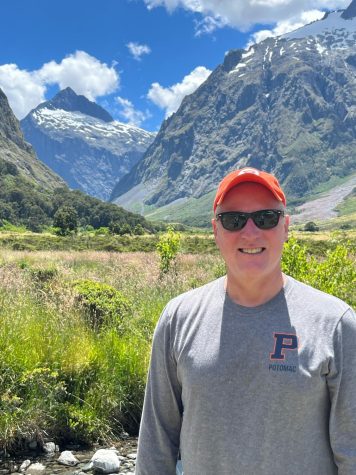
Were there any individuals you encountered or events you participated in that had a profound impact on you during your sabbatical?
Profound is a strong word, but I would say experiencing how New Zealanders care about their environment. New Zealand has a very fragile ecosystem, and they protect it very carefully. They are stewards of their natural environment. The ozone layer is very thin over New Zealand, and everyone is educated about the dangers of skin cancer through overexposure to UV rays. You do not see, even in the middle of the summer, people lying on the beach. Sunscreen is available everywhere– and they apply high SPF whenever they are outside. You see people take care of their own personal health and understand the interaction between individuals and their environment.
There’s a Maori saying all New Zealanders seem to live by: “The land doesn’t belong to us. It belongs to our grandchildren. We’re just borrowing it for now.” In other words, we are borrowing our land for the future, and so we need to take care of it. And while New Zealanders do have private property, their mantra is that we are borrowing the land from our grandchildren. We don’t own it, we’re borrowing from them. It gives them greater incentive to be stewards of their environment. You also see how they care for their environment at an individual level, at the community level, in how companies behave, and how political entities behave, and how towns and counties behave. They do their individual and collective best to protect a very, very precious resource. They know that the environment there is very fragile. They try to take care of what they have.
Did anything unexpected happen on your sabbatical?
I previously felt that the attitude toward Americans across the world might be more negative. And in fact, it was much more positive than I thought. Even when you travel to an international city like Sydney, with many immigrant communities, there’s a great mingling of people. People were incredibly curious about Americans and interested in what the U.S. is like. Generally, people had a very favorable attitude and they desired to go to the United States. I found that very affirming. It made me feel more proud to be American knowing how we are viewed abroad.
What advice would you offer to others considering taking a sabbatical based on your personal experiences?
If you have the opportunity to travel, seize it. Between raising a family, my own career, and my wife’s work, we never had the opportunity to travel like we did. If you have a window of time, go and see new places. It’s inspiring, it’s informative, and you can start making connections in ways you didn’t think things might be connected. Mark Twain once said that through travel the outer eye stimulates the inner eye. And I really believe that it stimulates thought about life, people, and societies.
How’s the transition period been since you came back from your sabbatical and back to school life?
I was a little nervous about coming back. I was excited, but a little nervous. And it all melted away when I saw the welcome back signs and posters.
I want to give a shout-out to Mr. Jaeger, who was the acting head of school, Ms. McDaid, the assistant head for academics, Ms. Conroy our CFO/COO, who stepped up and was part of the heads office, and Ms. Berman for all their support before and during my sabbatical. They all made the transition very easy. Coming back I’ve been incredibly busy, but I’m immensely grateful for everyone who made it possible.
Shortly after our interview, Mr. Kowalik followed up with an email that expanded on his travels in Italy:
Another real highlight of my sabbatical was seeing and touring the Santa Maria del Fiore Cathedral in Florence, Italy. Commonly known as the Duomo, the building is a stunning architectural wonder, designed and built by Filippo Brunelleschi in the early 1400s that is still standing today. Many believed that the genius of Brunelleschi and his innovative design and engineering techniques in constructing the Duomo inspired the Renaissance. As a former European History teacher, visiting Florence and seeing the Duomo was incredibly edifying.
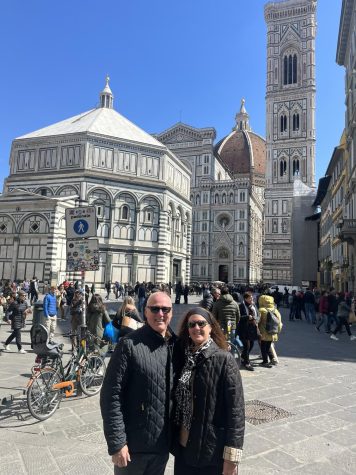
What also made this visit special is a model of the Duomo that sits on my desk at Potomac. It was given to me as a gift about nine years ago from Mr. Lindsay’s class, which designed and 3D printed the model. I look at it every day and told myself one day I’d visit the actual Duomo. And I finally did!

